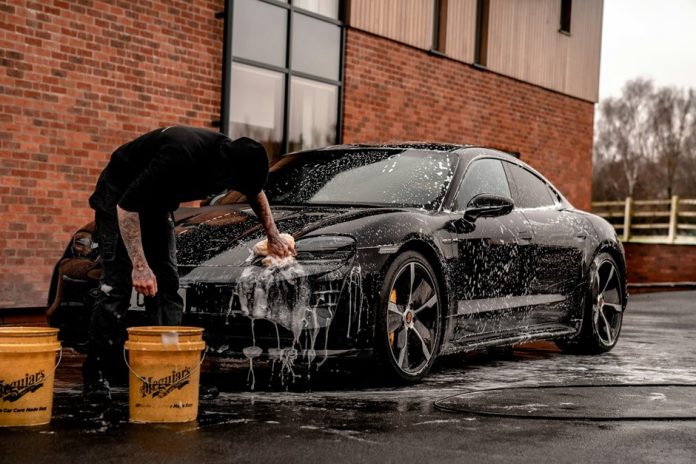Detailing your car is an essential part of vehicle maintenance, not only for aesthetics but also for preserving its value. However, even seasoned car enthusiasts can make mistakes during the detailing process that could harm the vehicle’s surfaces rather than improve them. In this guide, we’ll cover the most common car detailing mistakes and, more importantly, how you can avoid them to keep your car looking pristine.
1. Using the Wrong Cleaning Products
One of the most common and potentially harmful mistakes car owners make is using the wrong cleaning products on their vehicle. Household cleaners or dishwashing liquids are often too harsh for a car’s delicate surfaces and can strip away protective wax coatings, damage the paint, or degrade rubber and plastic parts.
How to Avoid: Always use products that are specifically formulated for automotive detailing. These are designed to clean effectively without causing damage. For example, use a dedicated car shampoo with a pH-balanced formula for washing the exterior, and choose products like leather cleaners or conditioners for the interior. Additionally, read labels carefully to ensure you’re using the right product for each surface. This attention to detail will help prolong the life of your vehicle’s finish and interior materials.
2. Skipping the Pre-Wash Stage
Many car owners make the mistake of skipping the pre-wash stage, jumping straight into scrubbing their vehicle. This can be a major problem, as dirt and debris on the surface of the car can act like sandpaper, scratching the paint as you wash.
How to Avoid: Before applying any soap or shampoo, give your car a thorough rinse to remove loose dirt, grit, and debris. Use a pressure washer or hose to knock off any contaminants sitting on the surface. By performing this pre-wash, you’ll reduce the risk of scratching and ensure that your wash mitt or sponge glides smoothly over the paintwork. Pre-washing is especially important after long drives, where your car’s surface accumulates more grime.
3. Not Using the Two-Bucket Wash Method
The two-bucket wash method is a simple yet effective technique to prevent scratches during the washing process. However, many people neglect this method and wash their cars with just one bucket, reusing dirty water that can reintroduce contaminants back onto the surface.
How to Avoid: The two-bucket method involves using one bucket for clean, soapy water and another for rinsing out your wash mitt or sponge. After each pass over the car, rinse the mitt in the clean water bucket before dipping it back into the soapy water. This helps prevent dirt and debris from being rubbed back into the paint. For added protection, you can also use grit guards at the bottom of each bucket to trap dirt.
4. Improper Drying Techniques
Air drying or using the wrong materials to dry your car can leave water spots or cause scratches. Allowing your car to air dry leaves minerals in water droplets on the surface, which can etch into the paint over time. Similarly, using an abrasive towel or rag can damage the clear coat.
How to Avoid: To avoid water spots and scratches, dry your car immediately after washing with a high-quality, plush microfiber drying towel. These towels are gentle on the paint and highly absorbent, reducing the risk of water spots. Use a blotting technique rather than dragging the towel across the surface. For even better results, you can use a dedicated car drying blower to remove excess water without touching the paint at all.
5. Neglecting to Protect After Cleaning
After a thorough clean, many car owners forget one of the most crucial steps: applying protection. Whether it’s wax, sealant, or a ceramic coating, these protective layers are essential for preserving your car’s shine and safeguarding the paint from environmental damage. Skipping this step leaves your car vulnerable to UV rays, bird droppings, and contaminants like road salt.
How to Avoid: Always apply a protective layer after detailing your car. If you prefer traditional wax, make sure to use it regularly, as it tends to wear off after a few months. For longer-lasting protection, consider applying a paint sealant or ceramic coating, both of which provide a durable shield against the elements and help your car maintain its glossy finish for extended periods. Regular maintenance of these protective layers is key to keeping your car in pristine condition.
Conclusion
Car detailing can be a rewarding experience that keeps your vehicle looking and performing at its best. However, common mistakes like using the wrong products, skipping essential steps, or failing to protect your car after cleaning can lead to long-term damage. By understanding and avoiding these mistakes, you can ensure that your car remains in excellent condition for years to come. With the right techniques and products, you’ll not only achieve a spotless finish but also preserve the integrity of your vehicle’s surfaces.








